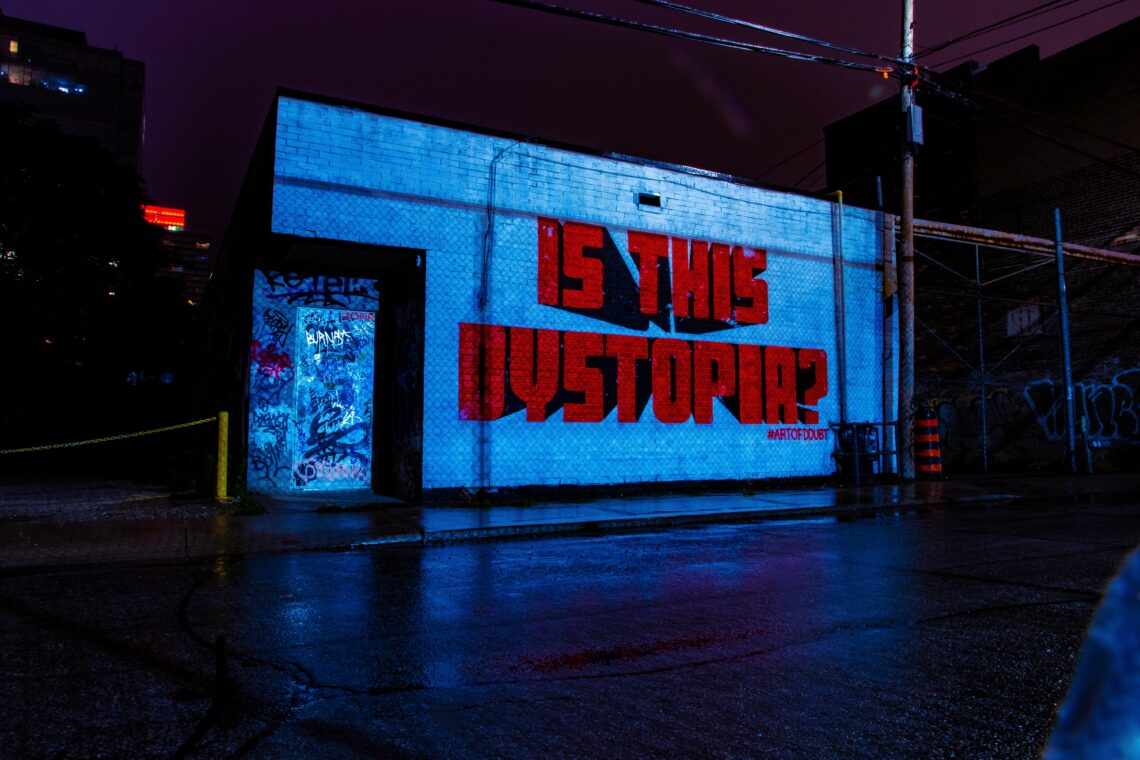
Entertainment in a brave new world
The idea of a utopia has existed for a long time, but the word itself was coined by Sir Thomas More in his book Utopia (1516). The word comes from the Greek “ou-topos,” meaning “nowhere.”
Bart Testa, associate professor of cinema studies at the University of Toronto, says that a utopia is not a fiction or a design but something that is woven into one’s philosophy.
“We might say that we’ve had some optimistic views of the future of the prospects of humanity even in the 20th century,” he says.
On the other hand, Testa says that a dystopia or anti-utopia is showing what would be bad for humanity. “The dystopia takes current trends and then monstrously projects them.”
Craig Melhoff, an English professor at the University of Regina, says that while the trends in dystopian films may change, the genre endures.
“Our stories reveal what we think of ourselves, what we value, what we fear,” Melhoff says. “What the particular thing is may change over time, but I think the theme persists because the feeling of vulnerability does.”
Most of the themes seen in classic dystopian novels such as George Orwell’s 1984, Aldous Huxley’s Brave New World and Anthony Burgess’s A Clockwork Orange may have reflected people’s thoughts at the time. Some contemporary examples of dystopian literature include Suzanne Collins’s The Hunger Games, Veronica Roth’s Divergent and Lois Lowry’s The Giver.
Zak Bronson, a PhD candidate and professor of information and media at Western University, says that films and literature reflect the context of their time period.
“They always reflect some of their own concerns,” says Bronson. “Whether it’s concerns about climate change or disasters, and I think that these narratives are a way that people attempt to make sense of crises or social problems that they don’t necessarily have easy answers to.”
He says that people seek representation that can give them answers or comfort for their anxiety and fear. “I think it gives people a sense of understanding of that crisis that can be very comforting to a certain sense.”
The most common themes seen in post-apocalyptic fiction are external threats for the extinction of humanity, such as plagues, technological overlords and alien invasions.
Chloe White, a first-year general studies student at the University of Fraser Valley, says the theme of environmental disasters is persistent throughout post-apocalyptic fiction, which mirrors real life.
“We have forest fires going on, air pollution, icebergs are melting and we’re slowly becoming a dystopia,” White says. “It’s not happening so fast, but slowly the world is coming to an end and we as humans are hurting the environment.”
Azmain Momen, a second-year economics student at the University of Toronto, says that relationships is another theme he sees commonly used in dystopian fiction.
“Post-apocalyptic settings really explore human nature and having relationships, a functioning society and people around us that can go away pretty fast,” he says.
Momen adds how shows like Black Mirror depict the consequences of allowing cutting-edge technology into people’s personal lives.
“There’s this intangible threat that could take away what’s human about us, and it’s mainly because of how much we’re allowing technology to seep into our lives,” he says. “In movies earlier, the main villains used to be like Godzilla. Nowadays, it feels like we’re in a Black Mirror episode.”
About the author
Khaleda is a former reporter for Youth Mind. If she's not daydreaming of owning a bookstore cafe, she's most likely pining over pretty classic book covers.







